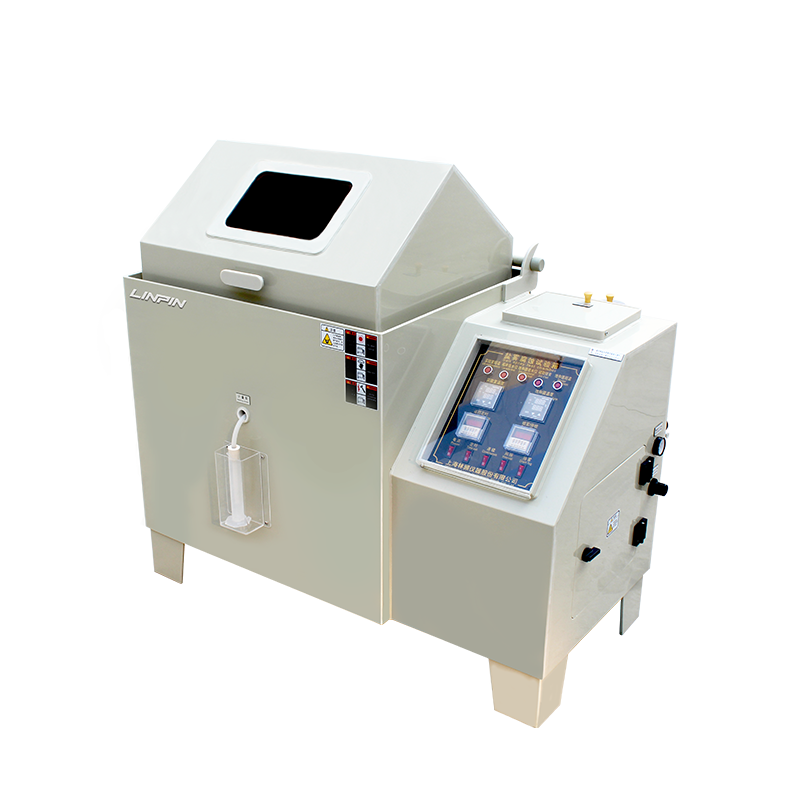

Purpose
To ensure that all salt spray test chambers remain in optimal operating condition, deliver accurate test data and achieve maximum service life, this work instruction is established.
Scope
Applicable to every salt spray corrosion test chamber used within the company for evaluating the corrosion resistance of metals, stone materials, coatings and related products.
Responsibilities
• Equipment Administrator: Develops the maintenance plan and verifies its implementation.
• User Department: Executes daily checks, weekly and monthly maintenance, and shutdown preservation.
• Maintenance Engineer: Performs fault diagnosis, part replacement and annual overhauls.

Daily Maintenance (After Each Test or Daily)
a) Draining: Open all drain valves to completely remove residual liquid from the test chamber, heating tank and saturator.
b) Cleaning: Wipe the inner liner, lid and sealing strip with a lint-free cloth dampened with a neutral detergent, rinse with pure water and air-dry.
c) Inspection: Verify that the atomizing nozzle is free of crystals or blockage; if spray is abnormal, refer to Section 8.2.
d) Recording: Fill in the “Daily Check Sheet for Salt Spray Test Chamber” and immediately report any anomalies.
Weekly Maintenance
a) Salt Solution Replacement: Replace the entire volume of salt solution after 7 days of use, or earlier if turbidity or sediment is observed.
b) Air Compressor Draining: Shut down the compressor, open the bottom drain cock to remove all condensate; check oil level and top up with ISO VG 32 oil if necessary.
c) Saturator Water Top-up: Refill to the mark with de-ionized or distilled water.
Monthly Maintenance
a) Heating Tank Water Replacement: After cooling, drain the tank, circulate a 5 % citric-acid solution for 30 min, rinse thoroughly and fill with fresh water.
b) Air Compressor Oil Change: Every 200 operating hours or at least every 3 weeks:
Shut down and isolate power.
Remove drain plug and drain all old oil.
Refill new oil to 1/2–2/3 of the sight glass.
Restart unloaded for 5 min and verify no leakage.
c) Electrical System Check:
• Visually inspect terminals for looseness or oxidation.
• Measure insulation resistance of heater and blower to ground ≥ 10 MΩ (500 V megger).
• Calibrate controller and saturator temperature sensor to within ±1 °C.
Long-Term Shutdown (> 30 Days)
a) Complete Draining: Empty heating tank, isolation tank, pre-heating tank, saturator and compressor condensate.
b) Drying: Place silica-gel desiccant inside the chamber, close lid and seal.
c) Storage: Disconnect power, water and air; attach a “Chamber Out of Service” tag.
d) Re-commissioning: Before restart, have a maintenance engineer perform electrical safety and functional checks.
Critical Component Maintenance
8.1 Atomizing Nozzle
• After each test, remove the nozzle and ultrasonically clean in 10 % ethanol or 5 % dilute hydrochloric acid for 10 min.
• For severe blockage, gently clear with a Φ0.3 mm stainless-steel wire; never strike with hard metal tools.
8.2 Control Panel
• Prevent salt or water splash onto the panel at all times.
• If liquid ingress occurs, shut down immediately and notify the manufacturer; unauthorized disassembly is forbidden.
Environmental & Safety Requirements
• Install the chamber in an independent laboratory at 15 °C–30 °C, RH ≤ 75 %, free of direct sunlight and well ventilated.
• Floor must be level, corrosion-resistant, and fitted with drainage and waste-liquid collection.
• Operators must wear safety goggles, acid-resistant gloves and an anti-corrosion apron; direct contact with salt solution is prohibited.
Related Forms
• Daily Check Sheet for Salt Spray Test Chamber
• Weekly/Monthly Maintenance Record
• Shutdown/Re-commissioning Checklist
Appendices
A. Recommended Spare Parts List (nozzle, O-ring, heater tube, fuse, etc.)
B. Emergency Contact List (equipment manufacturer, maintenance engineer, EHS department)